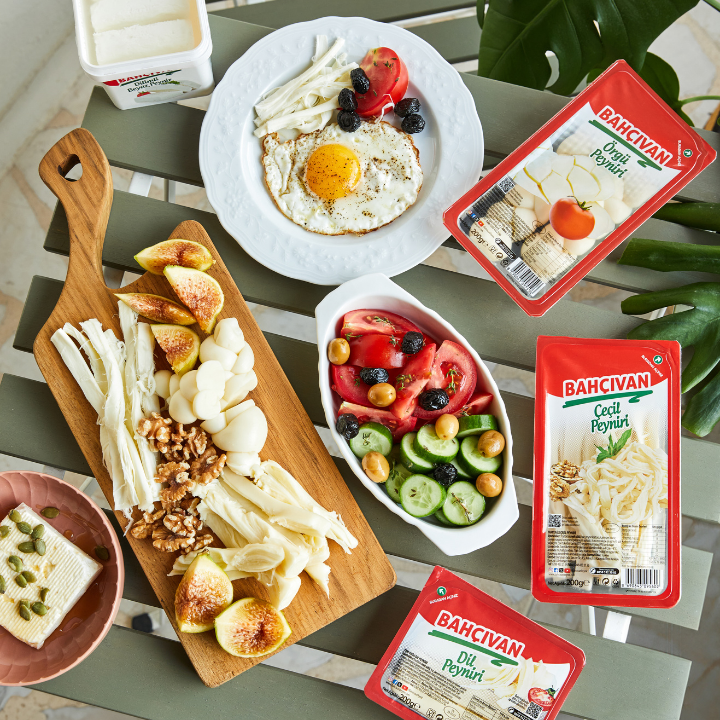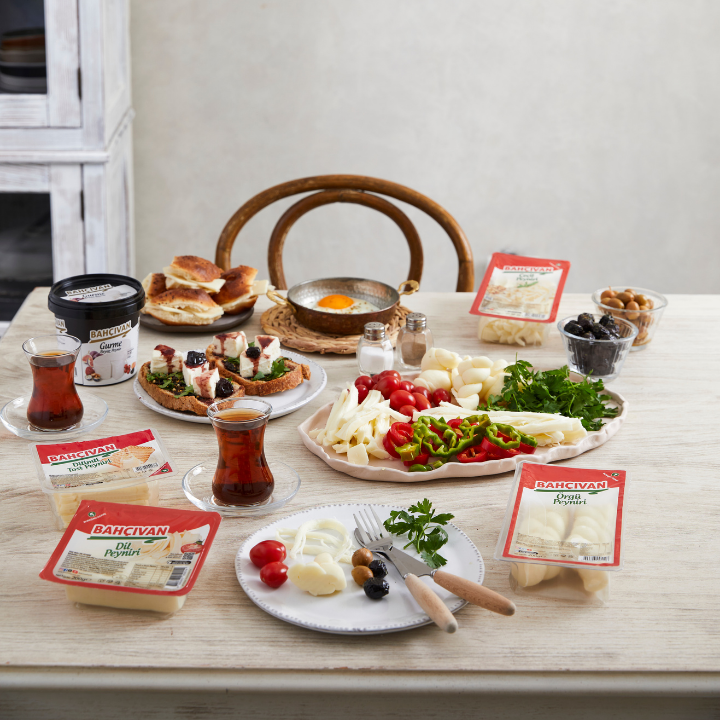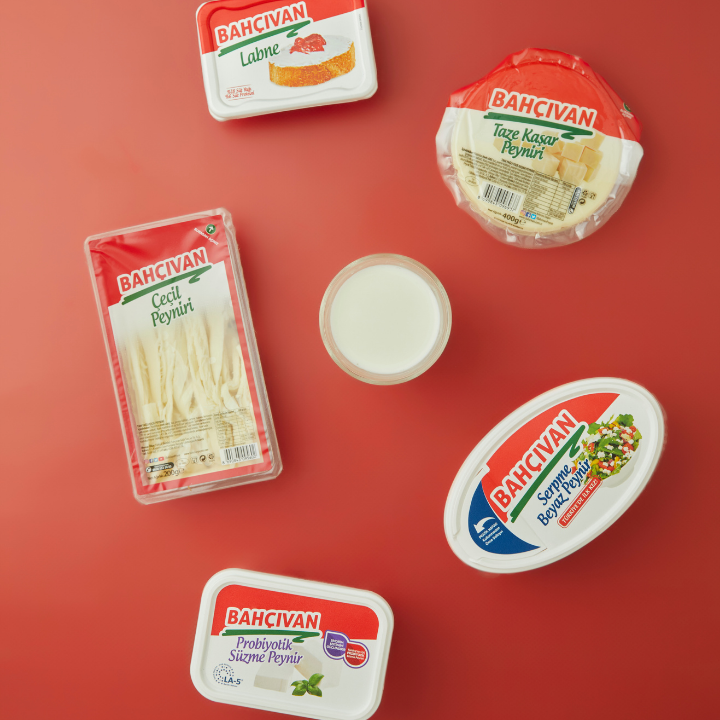
The leading actor of the most elegant presentations, the cheese plate is a form of service that allows you to experience various flavors together. Especially when served with a variety of drinks, a cheese platter, when prepared correctly, can enhance the enjoyment of a good dinner. Likewise, a light but delicious cheese platter is a must for breakfast. So, how do you prepare a cheese platter? You can continue reading our content for the answer to this question.
How to prepare a cheese plate?
The cheese plate, which can be consumed with various drinks, allows you to present different flavors together. You can serve the cheese plate for breakfast or as an aperitif with wine or raki. Of course, there are various details that you should pay attention to when preparing a cheese platter.
Here’s what you need to do step by step to prepare a good cheese platter:
- Make a cheese plate big enough for the number of guests coming. If there are a lot of people coming and you don’t have a big enough cheese platter, you can make more than one.
- Choose the cheeses you will use and the appetizers you will serve with them. If you are serving an alcoholic beverage, match it to the cheeses you are serving.
- For cheeses that need to be served hot, take them out about an hour before the presentation and let them stand at room temperature.
- Wash your plates and utensils thoroughly.
- Slice the cheeses carefully and arrange them on the cheese platter according to a certain pattern.
- Arrange the appetizers and garnishes on the plate.
- Put the finishing touches on the plate, making sure that all the appetizers and cheeses are placed correctly.
- Serve the plate.
How to Present a Cheese Platter?
Preparing a cheese platter requires attention to detail and care. It can be a fun activity for people who like to spend time in the kitchen; putting together the different ingredients, arranging the cheeses, decorating the plate and getting out the knives to match the cheeses is a pleasure in itself. Of course, there are some things to consider when preparing a cheese platter presentation.
First of all, the presentation of your cheese platter should be rich in variety. A good cheese platter should include different types of cheese and appetizers, and plenty of accompaniments. This way, you can let your guests taste different flavors while eating the cheeses.
You should also choose the presentation plate well. It will always be advantageous for you to choose a large and elegant plate where the different types of cheese you put will not create a crowded image and where you can easily put the accompaniments. At the same time, the cutters, slicers and knives you will give to your guests should also be suitable for cutting cheese. If you have a special type of cheese to add to the plate, you may want to consider putting a special knife for this cheese.
In general, you should pay attention to color when preparing a cheese plate. Make sure that the appetizers and accompaniments do not disturb the color harmony on the plate. Place different colored cheeses in an orderly manner to create a more attractive appearance. If you think your plate is too colorless, add some contrasting garnishes. Seasonal greens or leaves are a good example – more on that in the next topic.
One of the most common drinks served with a cheese platter is wine. However, choosing a good wine is not always easy. You need to choose a cheese that matches the overall flavor of the cheeses on the plate. You can do this by learning which wines go well with different types of cheese.
Things to Consider When Presenting a Cheese Platter
Preparing a cheese presentation plate is an art. You have to think carefully about all the details, arrange your plate beautifully and decorate it with the most colorful ornaments. This way, you can present a unique cheese platter to all your guests.
If you’re wondering how to prepare a cheese platter, here’s everything you should pay attention to:
Choose your cheese carefully: Having different types of cheese on your cheese platter creates a richer look. Therefore, try to provide variety on your plate with hard, soft, white, yellow, salty and sweet cheese options. However, don’t stuff your plate with all the cheeses you find in the fridge; be selective. By choosing quality cheeses, you will not only give your plate a rich look, but you will also make a unique presentation to your guests.
Choose the right serving platter and utensils: Are you putting parmesan cheese on the plate? Place a knife accordingly. Are you serving different cheeses? Make sure you have enough slicers for all guests. Serving grated cheese? Don’t forget to place it in a suitable container. In short, make sure you choose all the right tools, including the plate. Make a professional impression with an elegant presentation plate or a serving board.
Arrange the cheeses in an orderly manner: The cheeses you place on a cheese platter should be arranged in a certain order. A common arrangement is to put the lightest tasting cheeses in the front and the heavier ones in the back. The color, shape or size of the cheeses can also be a good arrangement criterion; you can place dark cheeses in one place and light cheeses in another, or arrange the cheeses from small to large.
Be meticulous in choosing the accompaniments: The accompaniments are as important as the cheese platter itself. Add slices of fruit, bunches of grapes, dried nuts, olives, nuts or various appetizers to create an aesthetic appearance. This not only adds visual appeal to your plate, but also gives your guests something other than cheese to eat. Make sure your accompaniments are compatible in taste with the cheese. Even the sweet fruits you choose should not overpower the taste of the cheese in terms of intensity.
Add breadsticks, bread and crackers: Cheese and pastry are inseparable. If you want to offer your guests the unique flavor of this duo, you can add various crackers, pastries and breads to your cheese platter. Salty foods such as gruyere, baguette slices or breadsticks are an integral part of traditional cheese platters. With different textures and flavors, it will be a pleasure for your guests to try the cheeses on the plate.
Decorate your plate with ornaments: If you want to add a little more elegance to your plate, you can decorate it with fresh herbs, flowers or leaves. You can also add a different flair to your plate with a variety of edible decorations. The only thing to remember when decorating your plate is to make sure that the decorations are edible and do not pose any danger to human health.
You can add labels: If you want your guests to know what they are eating, you can place small notes on your presentation plate. This is especially good for labeling cheeses that contain allergens and alerting allergy sufferers.
Pay attention to the serving temperature of the cheeses: Not all cheeses are served cold. Some cheeses may need to sit at room temperature for half an hour to an hour before serving. If you don’t know which cheeses need to sit for how long, you can use the internet or – if you have one – an encyclopedia of cheeses and appetizers.
Consider the needs of your guests: If your guests are vegan or lactose intolerant, adjust your appetizer choices accordingly. This will allow your guests who don’t/can’t eat cheese or dairy to enjoy your company.
Always prioritize hygiene: Pay close attention to hygiene both when preparing and serving the cheese platter. Wash your hands thoroughly before handling the cheeses, make sure the knife you use to chop the fruit is clean and – if you have long hair – wear a bonnet. After the presentation, clean the plate and utensils thoroughly. Store uneaten cheese in a sealed container in the refrigerator.
Cheeses by Flavor Compatibility
You are preparing your cheese platter, but what do you know! You still haven’t decided what to serve with it. “What goes well with this cheese? What goes well with this cheese?” and you still haven’t decided on anything. Luckily, we at Gardener Cheese are here to help! Below you will find a list of foods and drinks that go well with different types of cheese.
Fresh, soft and fatty cheeses usually go well with white wine. So, you can serve white wine with a platter of mozzarella, burrata, mascarpone, ricotta, caboc and various fresh village cheeses. It is possible to prepare a unique cheese platter by placing sweet fruits and nuts next to such cheeses.
Semi-hard cheeses go well with light-bodied red wines. You can also enjoy these cheeses with aromatic white wines. Generally, cheeses such as edam, reblochon, langres and fontina are preferred for this type of presentation; sweet fruits and nuts can be used as garnish.
Hard cheeses with intense flavors and aromas are perfect to serve with full-bodied red wines. Pecorino, Kars gruyere, beaufort and comté cheeses go well with this type of wine. For sparkling wines, moldy and slightly salty cheeses are recommended, such as the famous camembert, brie or tulum cheese in Mersin cloth.
If the cheese platter is prepared to be consumed with raki rather than wine, more local cheeses may be preferred. Traditional flavors such as Ezine, Toros goat cheese, Thracian cheddar, Diyarbakır knitted cheese, Bergama tulum, Divle obruk cheese and Erzincan tulum are a must for raki tables.
How Should a Cheese Platter for Breakfast Look Like?
If you are wondering how to prepare a breakfast cheese plate, we have good news for you. Breakfast cheese platters are a little easier to prepare than cheese platters prepared for guests on special occasions and allow freedom of presentation. Of course, as with all cheese platter presentations, you should consider the number of people when preparing a breakfast cheese platter.
If you are preparing a cheese platter for a few people, you can fill a large flat plate with as many cheeses as there are people. Sprinkling nigella seeds on top of the cheeses and serving salami or sausage on the side will add a much richer look to your plate. For more crowded tables, you may want to consider having more than one cheese plate.
Lighter and less salty cheeses are generally preferred for breakfast. Therefore, you need to make sure you choose the right cheeses. Feta and cheddar are among the main cheeses that should be included in such plates. You should definitely not neglect herbed cheese, which is a must for breakfast cheese plates.
Optionally, you can also top your breakfast cheese platter with light bakery products such as breadcrumbs or grissini. Breakfast foods such as bagels, pastries or cigarette pastries should also not be skipped. Although we don’t recommend it because of its fatty nature, you can also add fried potatoes or chips to your breakfast cheese plate.
Of course, the ideal cheese platter is one that includes things other than cheese. So, you can add a variety of appetizers to your cheese platter, such as jams, olives, walnuts, oranges, strawberries, bananas, hazelnut cream or peanut butter.
To enrich your table, you can make breakfast foods to eat with cheese. Foods such as omelettes, scrambled eggs or pancakes will allow you to add different flavors to your breakfast table and offer you a nutritious breakfast.















